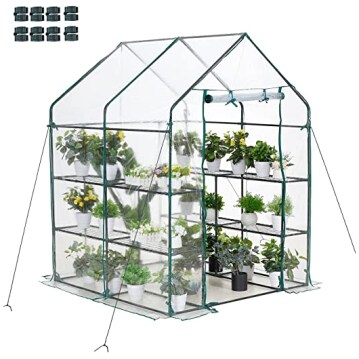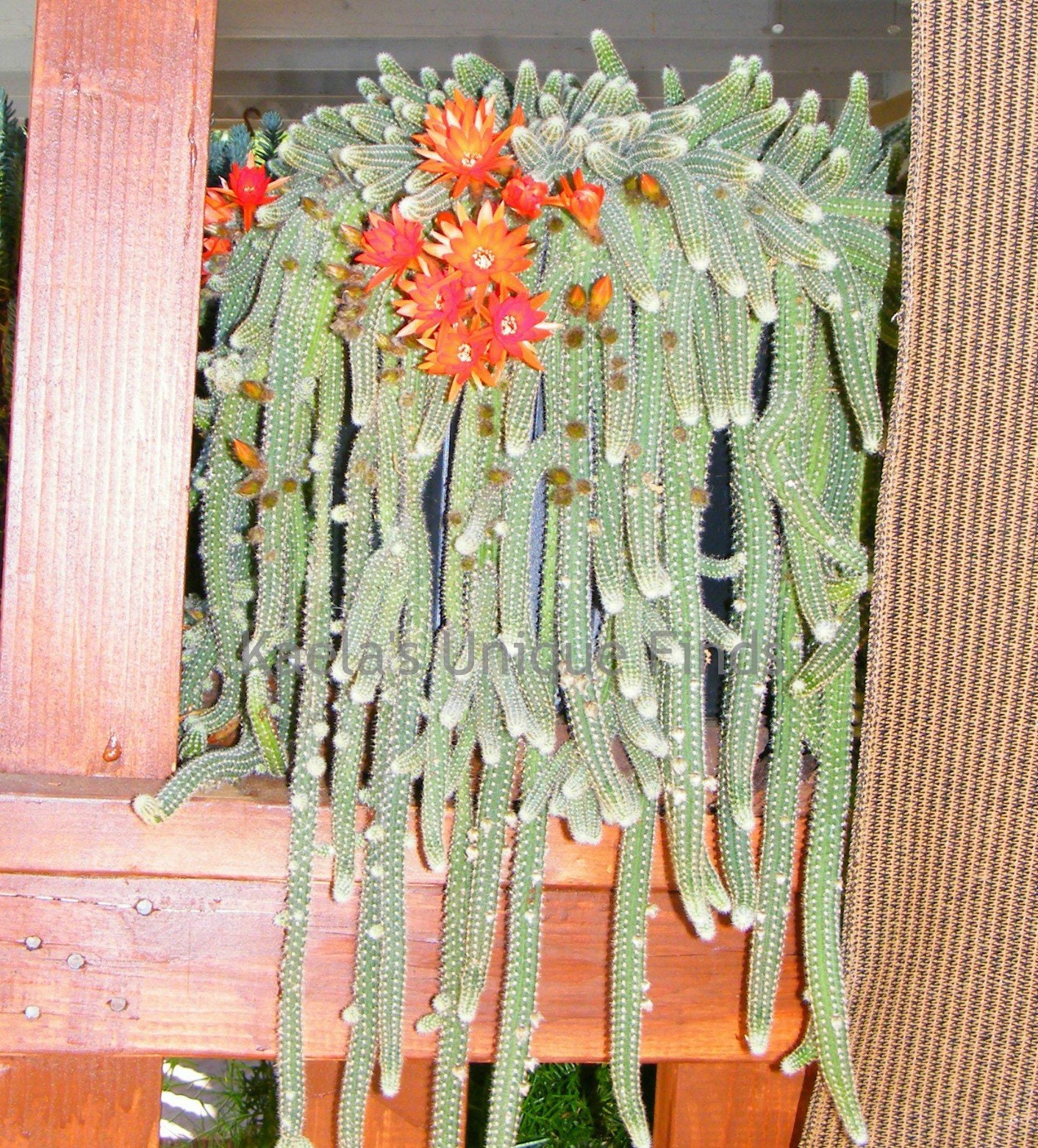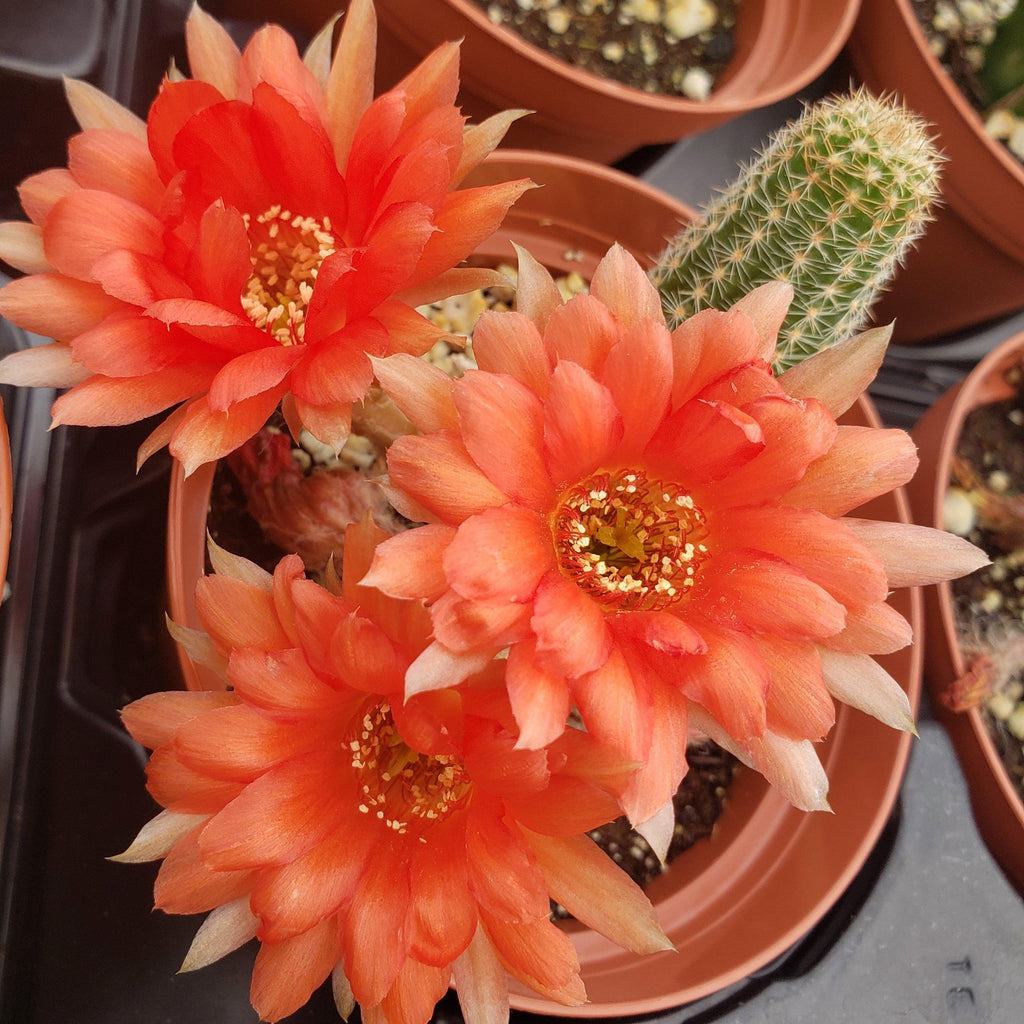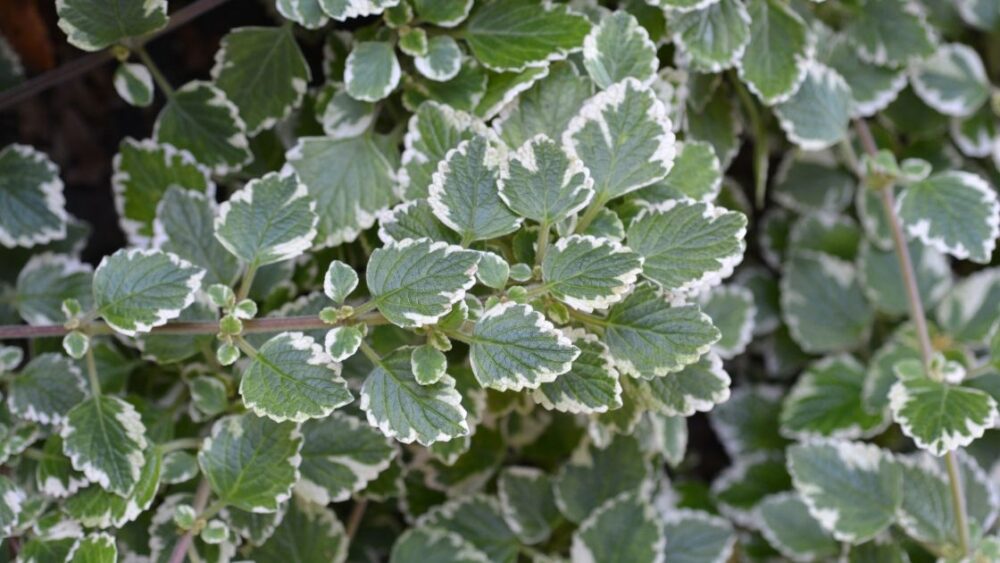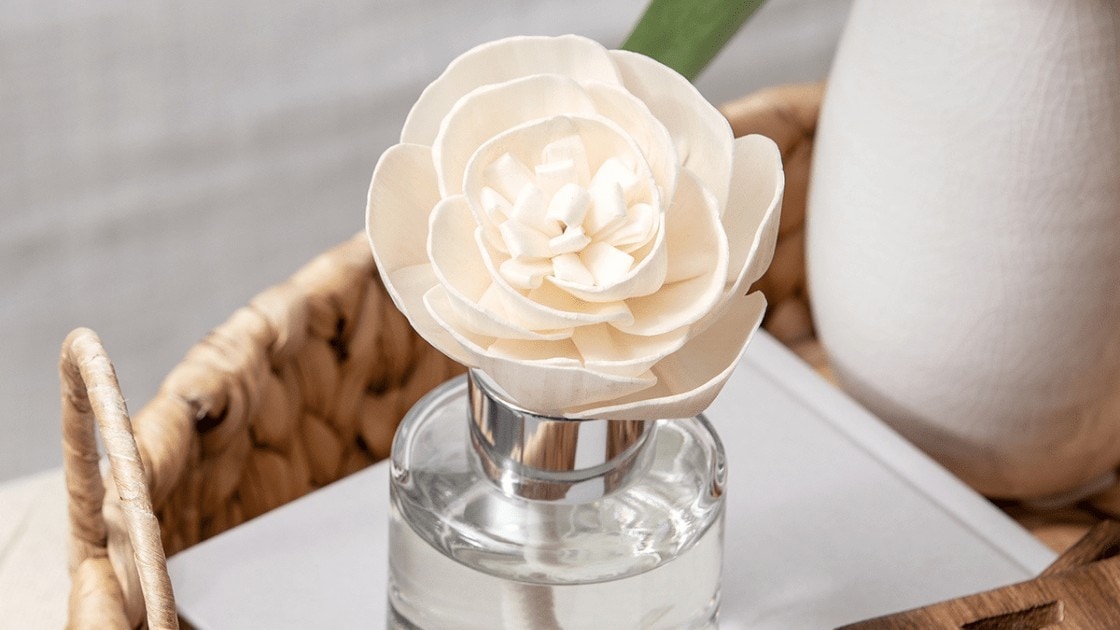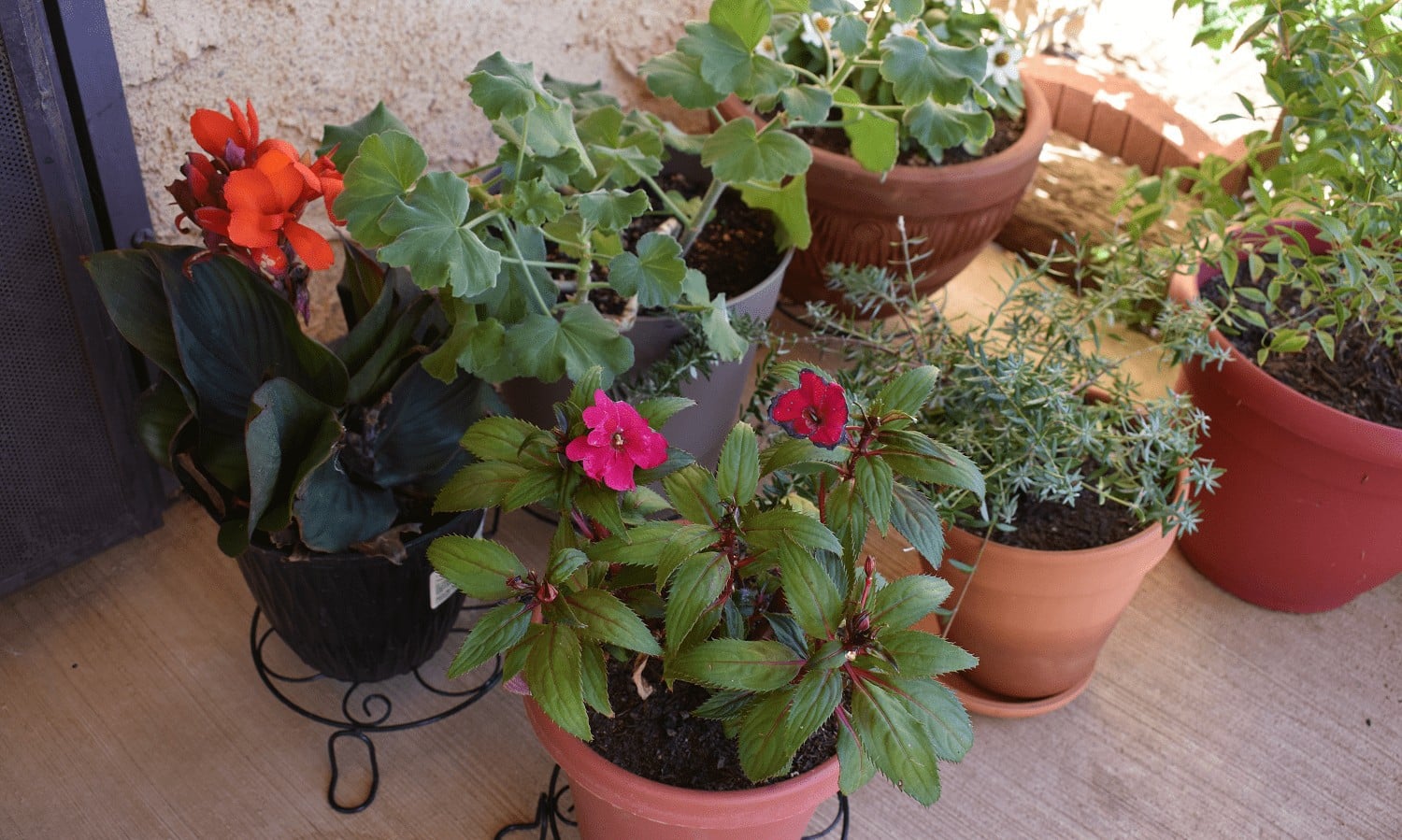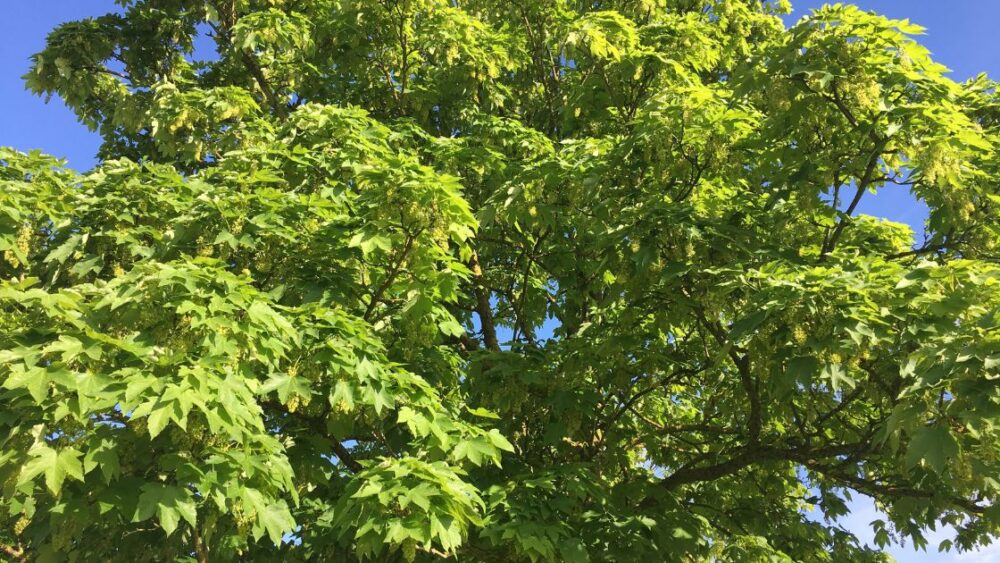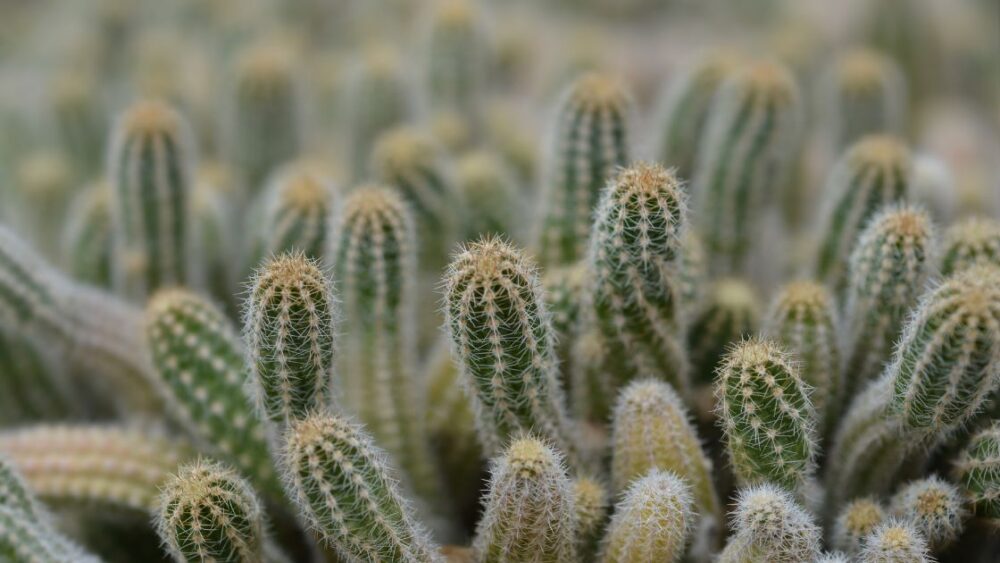
Your landscaping objectives don’t have to be difficult to achieve. Growing a low-maintenance succulent like the Peanut Cactus will let you off the hook. This plant enhances the appearance of your outdoor space with its attractive floral display and robust stems without requiring you to maintain elegant growing conditions constantly.
The peanut cactus is a branched cactus with finger-like stems, clustering, and trailing growth habits (Echinopsis chamaecereus). It is an excellent option for hanging baskets because of its growth habit. Each ribbed stem has a diameter of half an inch, can reach a length of 6 inches, and is covered in tiny white bristles.
The peanut cactus may appear prickly, but its spines are fairly soft. Nevertheless, touching it is not advised because its tiny bristles can still pierce the skin and be painful. However, compared to some of its spikier cacti relatives, the peanut cactus is softer and simpler to grow.
Browse our Affiliate Products
Are Peanut Cactus Easy To Care For?
It is a simple-to-grow plant well-known for its vibrant blooms and distinctive appearance. This Cactus is an ideal minimal plant for anyone looking to add a little color and interest to their home décor.
The Peanut Cactus is a lovely little plant that works well indoors. It is a well-liked option for novice and seasoned plant owners due to its distinctive shape and simple maintenance requirements.
You can grow peanut cactus in many ways: as a houseplant, but it can also be grown outdoors in frost-free climates.
- Similar to peanut cactus, check out this article: Hedgehog Cactus: Care and Common Problems
- Also, check out our other cactus care article here: Cactus Category
Peanut Cactus Care

Peanut cactus are low-maintenance and simple to grow, making them popular choices for gardeners. This Cactus, native to Argentina, thrives in mountainous regions and prefers sparingly watered, bright environments. The peanut cactus cannot withstand frost but needs cooler winter temperatures to form buds in preparation for the coming season. Healthy peanut cacti will produce stunning red-orange flowers from late spring to early summer.
Common Name
The common name of this Cactus is peanut cactus. It gets its name from the long, creeping stems that resemble a pile of peanuts when viewed from above.
Scientific Name
The scientific name of the peanut cactus is Echinopsis chamaecereus.
Growth Cycle
The peanut cactus (Echinopsis chamaecereus) has finger-like stems, a clustered growth habit, and a trailing growth pattern. The growth process for peanut cacti includes five stages. Germination, vegetative growth, flowering, pollination, and fruit formation are these stages.
This unusual plant, known as a cactus, can grow up to a foot per year. A healthy flower only requires a little fertilizer and water every two weeks. Due to its hardiness, the Peanut Cactus is unaffected by strong winds or intense heat.
Sunlight Effect
Like most cacti, the peanut cactus thrives in bright, sunny environments. Low light or complete shade are not suitable environments for growing it. Plant the peanut cactus where it will receive direct sunlight if grown outdoors. This Cactus might benefit from shade in areas where the weather is consistently hot to shield it from the harsh afternoon sun. When grown indoors, put the peanut cactus in your home’s most sunny area. Ideal windows face west or south for maximum light.
Watering
Peanut cacti are drought-tolerant and easily overwatered due to their fleshy, water-storing stems. Between waterings, allow the soil to dry out before watering again deeply and thoroughly completely. During the winter, when the Cactus is dormant, reduce watering.
Adult Size
The individual stems are typically about a half-inch thick and may reach up to 6″ inches long.
Planting Zones
This Cactus does poorly in moist environments and grows best in hot, dry climates. Only USDA zones 10a to 11b are suitable for growing the peanut cactus outdoors year round because it is not frosted tolerant.
Weather Hardiness
This Cactus does not do well in humid environments and prefers hot, dry climates. The peanut cactus can only be grown outdoors all year round because it cannot withstand frost. The Cactus benefits from being exposed to cooler temperatures in the winter to mimic its natural habitat and promote blooming.
Ideal conditions range from 32 to 45 degrees Fahrenheit (0 to 7 degrees Celsius). The peanut cactus is typically tolerant of average indoor humidity and temperature ranges; however, avoid placing it in notoriously humid rooms, like the bathroom.
Propagation Of Peanut Cactus
The peanut cactus is easily propagated using stem cuttings, like most cacti. Put the base of broken branches or stems into newly prepared Cactus or succulent soil, then wait 12 to 24 hours for the ends to callous over (until they are no longer wet). Once roots start to sprout, which usually takes a couple of weeks, wait to water the newly planted stem.
Toxicity Of Peanut Cactus
The peanut cactus do not poison both humans and animals. Despite this, the plant’s entire surface is covered in spines, some of which, despite being relatively soft, is thought to prevent it from being considered edible.
Dormancy
Peanut cacti grow in warm summer environments with little precipitation. They cease growing in the summer (dormancy) and resume in the middle of the fall when the rainy seasons begin.
However, during dormancy, the species shrinks up a bit and acquires a slight reddish tint on its stems. It is usually a period of dormancy before a blooming season, so there is a wait between seasons. As watering continues in spring, the green creeps back the stems.
Soil
The peanut cactus prefers sandy, well-draining soil to grow in its natural environment. To ensure that water drains quickly from around the roots of the peanut cactus when planted outdoors, ensure the soil has been amended with a lot of sand and perlite. The peanut cactus cannot tolerate standing in water and is prone to root rot. The best soil for growing the peanut cactus indoors is typical Cactus or succulent potting soil.
For more information on cactus soils, check out this article: What is the difference between potting soil and succulent soil?
Bloom
This succulent typically blooms in the late spring or early summer. Your peanut cactus will produce some pretty red-orange flowers that may last the entire blooming season. They have hairy floral tubes and a funnel-like shape. Despite not being frost-tolerant, this plant needs a cooler environment in the winter to get the buds ready for blooming. When the flowers start to wilt, you can move the growing medium outside or close it to a window with plenty of sunlight.
Fertilization For Peanut Cactus
The peanut cactus generally doesn’t require fertilizer because it does not feed heavily. However, the first few months of the growing season can benefit from monthly fertilization with a balanced, low-strength fertilizer. The peanut cactus responds very well to fertilizers made for cacti and succulents.
For fertilizer cactus products, check out these affiliate products: Cacti & Succulent Fertilizers
Peanut Cactus Common Problems
Overwatering is the most common issue with peanut cactus plants. Keep an eye out for these warning signs that your plant needs more water.
Wilting
The wilting of a cactus plant is not always a sign that it needs water. Usually, it means the Cactus has received too much water.
Soft Stems
The stems will become floppy and soft from overwatering.
Leaf Drop
Some tiny peanut-like fingers from the peanut cactus may fall to the ground.
Yellowing
Overwatered peanut cacti may start to deteriorate or turn yellow.
What To Do If Your Peanut Cactus Is Dying?
Peanut cacti are drought tolerant and easily overwatered due to their fleshy, water-storing stems. If your peanut cactus is dying between waterings, let the soil dry out before watering deeply and thoroughly again. During the winter, when the Cactus is dormant, water less frequently.
Final Thoughts
The peanut cactus is a relatively drought-tolerant plant. While the growing season is important, it is still imperative to provide enough water. Utilize well-draining cactus soil and maintain temperatures between 50 and 80 degrees Fahrenheit. Apply a diluted solution of cactus fertilizer a few times during the growing season.
Peanut cacti can spend the summer outdoors in northern climates and the winter indoors. To keep a cool room in bright indirect light during the winter, wait until nighttime lows are close to freezing before bringing it inside.


